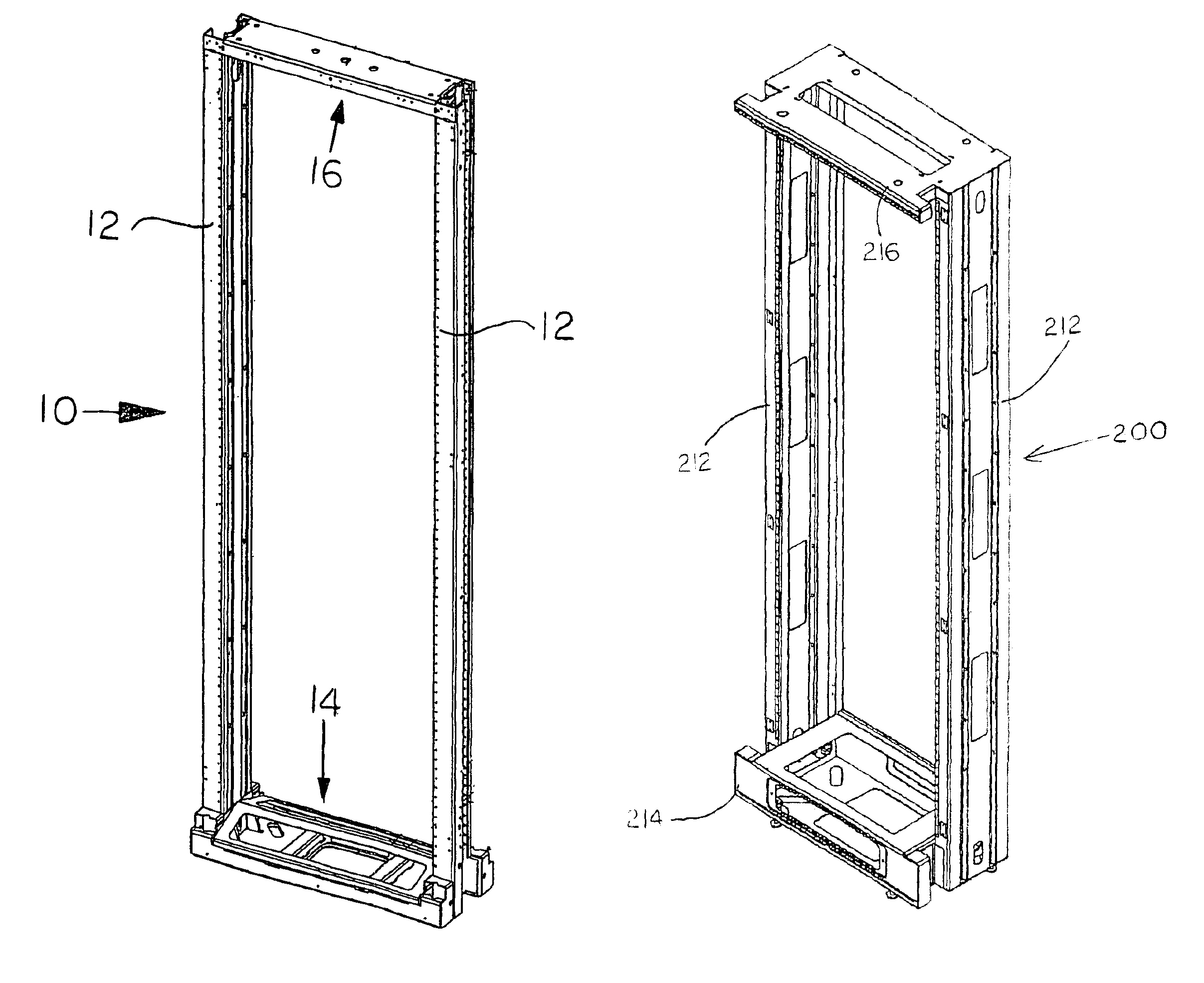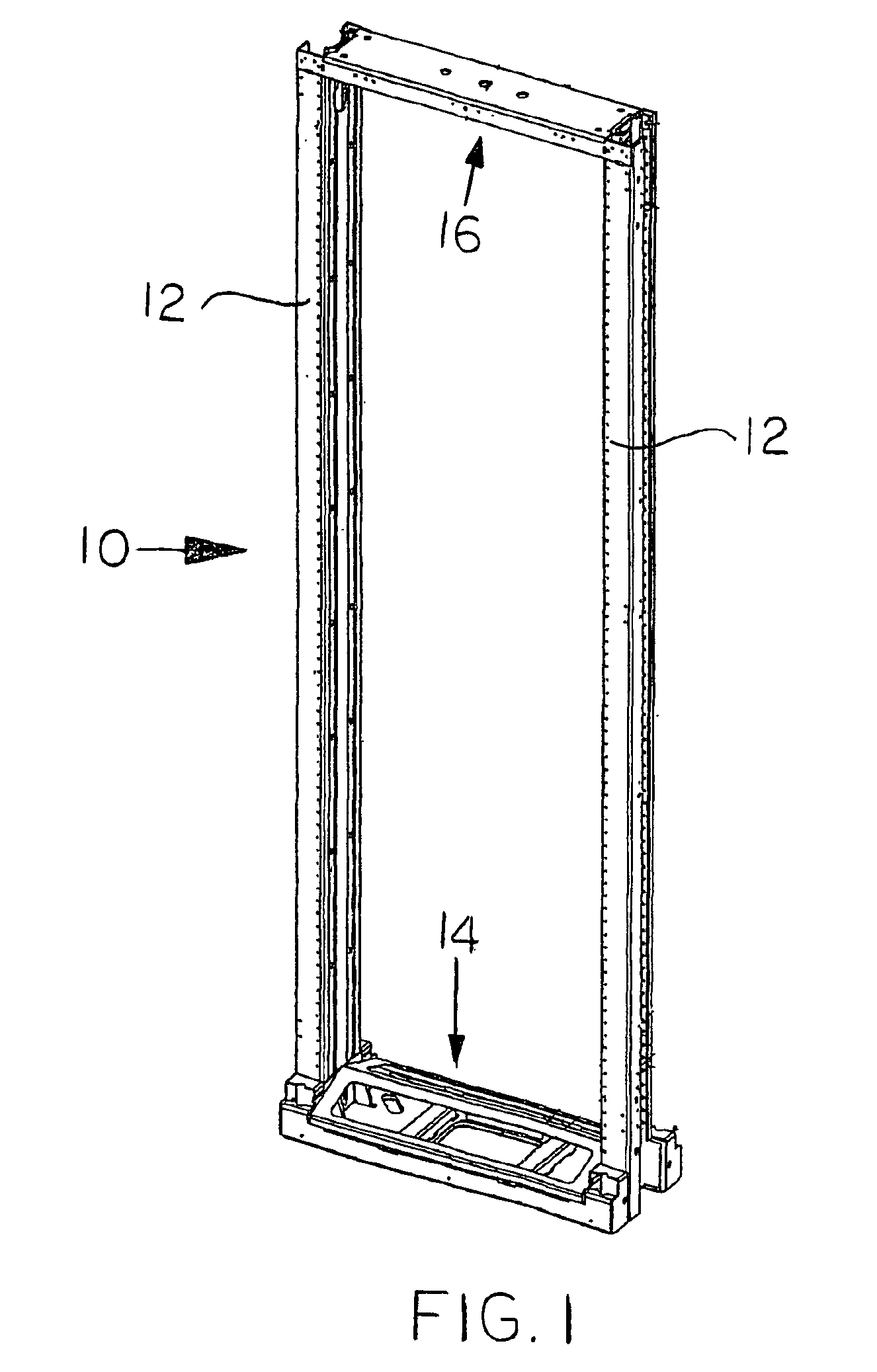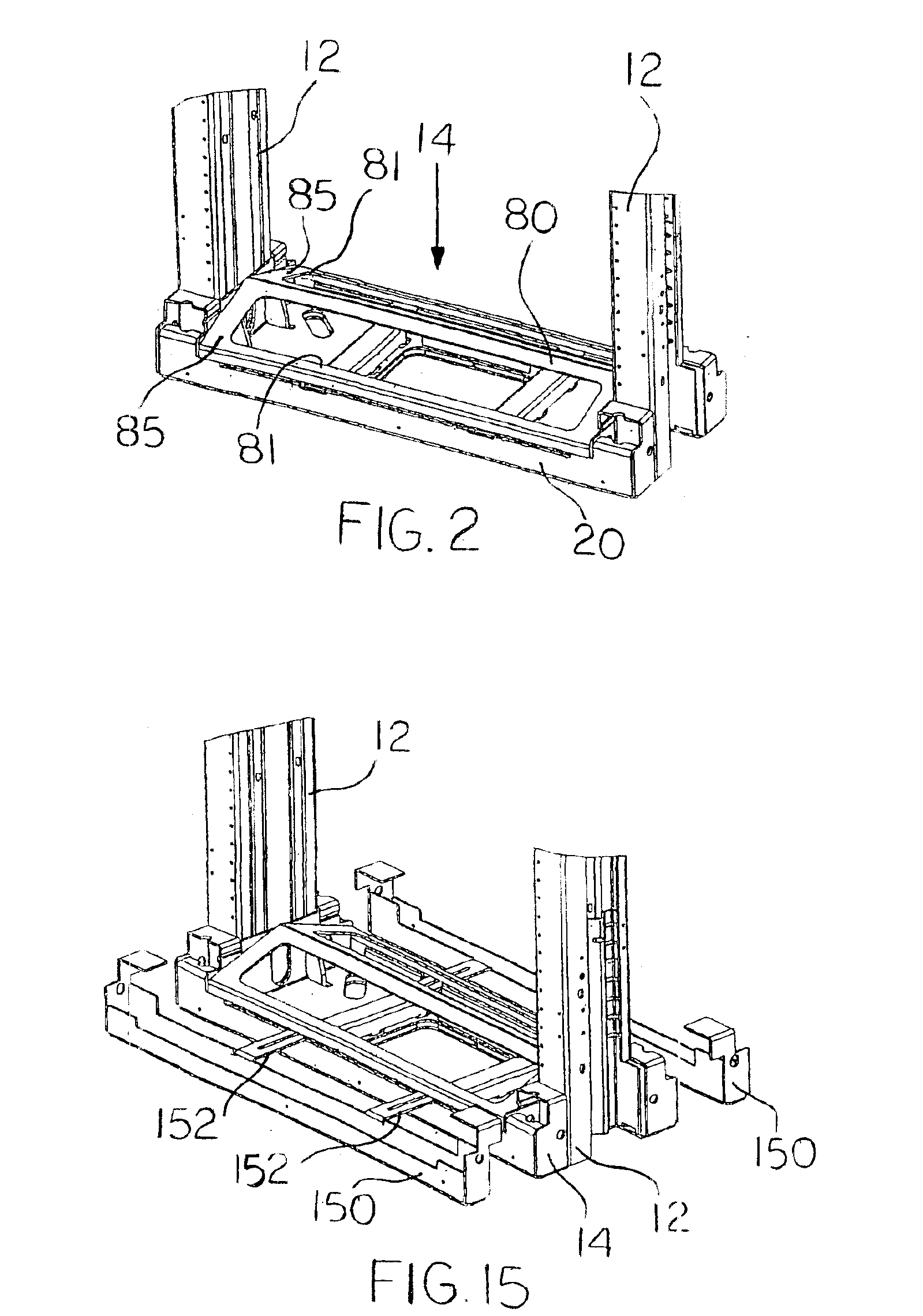Earthquake resistant equipment rack
a technology for equipment racks and earthquakes, applied in the field of racks for electrical equipment, can solve the problems of high stress and deflection, add significantly to the labor and cost of manufacturing, and increase the overall weight and cost of racks, and achieve the effects of fewer components, increased overall strength, and reduced labor and cos
- Summary
- Abstract
- Description
- Claims
- Application Information
AI Technical Summary
Benefits of technology
Problems solved by technology
Method used
Image
Examples
first embodiment
[0044]FIG. 1 shows an earthquake resistant equipment rack according to the present invention. The equipment rack 10 generally includes a base 14 and top 16 coupled by two side posts or rails 12. As shown in FIG. 3, the base 14 includes four main stacked components, an outer base 20, two base plates 40, an inner base 50 and a base box 60. These components are welded to another. The rails or vertical upright members 12 fit into notches 34 formed in the outer base 20 and the base plates 40. The rails 12 are also welded to the components of the base 14.
[0045]In addition, the outer base 20 includes four gussets 24, one at each corner of the outer base 20, and a front wall 28 and rear wall 29, all formed integrally with the outer base floor 21. A cable aperture 22 is positioned in the center of floor 21. A plurality of weld apertures 23 are provided in the outer base 20 and the inner base 50. These weld apertures 23 are used to plug weld one component to another. For example, the weld ape...
second embodiment
[0056]an earthquake resistant equipment rack is shown in FIGS. 19 through 26. Equipment rack is formed of a base 212 and top 216 attached by two side posts or rails 212. Base 214, top 216 and rails 212 are welded to one another. Base 214 includes a floor 220 with an integral upwardly extending back wall 222. Back wall 222 has a horizontally extending return 224 extending from its upper edge. Gussets are provided in each front corner of base 214. Each gusset includes an upwardly extending side 225 with a horizontally extending top 226 and a short return 217 extending downward from top 226. The base 214 includes level adjuster holes (not numbered), cable access aperture 22 and anchor bolts holes 31, similar to those described above for equipment rack 10.
[0057]A cover 230 is non-removably attached (preferably by welding) to base 214. Cover 230 includes a top with downwardly extending front and back walls, 232, 236 and downwardly extending side walls 237. Each side wall 237 has a cable ...
PUM
 Login to View More
Login to View More Abstract
Description
Claims
Application Information
 Login to View More
Login to View More - R&D
- Intellectual Property
- Life Sciences
- Materials
- Tech Scout
- Unparalleled Data Quality
- Higher Quality Content
- 60% Fewer Hallucinations
Browse by: Latest US Patents, China's latest patents, Technical Efficacy Thesaurus, Application Domain, Technology Topic, Popular Technical Reports.
© 2025 PatSnap. All rights reserved.Legal|Privacy policy|Modern Slavery Act Transparency Statement|Sitemap|About US| Contact US: help@patsnap.com



